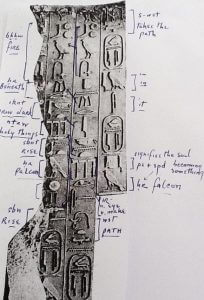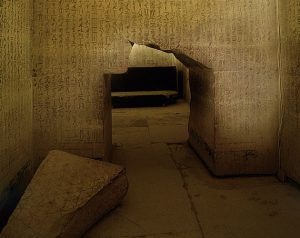
A scientist claims she has uncovered the mystery of the pyramid texts
 6
6
 09. 11. 2016
09. 11. 2016

Susan Brind Morrow has created a new translation of the oldest sacred texts in the world.
For many years, experts believed that the texts in the pyramids were just a series of funerary prayers and magical incantations that served the Egyptian royal family for protection in the afterlife.
However, the famous classical philologist and linguist Susan Brind Morrow has a completely different interpretation of this sacred literature. He says he believes this is evidence of a complex religious philosophy that does not concern so much mythology, but focuses more on the life-giving forces of nature. At the same time, he believes that this ancient Egyptian philosophy influenced many spiritual traditions that emerged later.
The texts in the pyramids are the oldest religious writings of modern experts from ancient Egypt - and at the same time it is quite possible that they are the oldest sacred texts in the world.
S.Morrow explains his research and presents new translations of entire texts in his latest book The Dawning Moon of the Mind: Unlocking the Pyramid Texts.
"These aren't magic incantations at all," Morrow told The Hufflington Post about the texts in the pyramids. "These are poetic verses that are composed just like today's poetry, are sophisticated and full of puns."
According to Moorow's statement, many Egyptians were looking at texts in the pyramids as something written by primitive and superstitious people. Moorow puts the lyrics into a live context
Egyptian literary tradition and its cultural connections with nature.
Her words, when she saw the ancient lines inscribed in the inner walls of the pyramids at Unas, were a "densely folded but high-precision" star map. The Egyptians studied the stars to determine when floods would occur again on the Nile River during the year, making their fields more fertile. In the earliest form of Egyptian philosophy, as Moorow says and believes, it was not the goddesses or spiritual figures worshiped by the Egyptians, but the sky itself. It was nature itself that was sacred and that had power over the promise of eternal life.
In his book, he offers a new translation of the introductory verses of the texts, which, as he believes, describe the soul ascending up into the fire or the dawn in the sky below the saints or stars:
The sword of Orion opens the sky door.
Before the door closes the gate again to the road
over the fire, under the saints while slowly darkening
As the years falter, let the Unis climb into this fire.
"I realized I was looking at the very vivid poetic description of the real world," Moorow said.
Ale James P. Allen, an Egyptologist at Brown University who created a translation of the texts in 2005, is not entirely convinced. He likened her translation to the work of "amateurs" and called it a "serious misinterpretation" of the texts in the pyramids.
"The translator's job is to be as faithful as possible to the original text, while using words and structures that make sense to modern readers. Miss Morrow didn't do it, "Allen said The Huffington Post. "Her translation is simply a poetic impression of what it is he believesthat he should say the text and not the reflection of what he actually says. "
The Huffington Post. "Her translation is simply a poetic impression of what it is he believesthat he should say the text and not the reflection of what he actually says. "
Moorow herself is convinced that hieroglyphs are not something that is only available to experts. The benefit of the new translation was to encourage others to look at the text and try to find out for themselves what they would find in it.
"Whenever people think of hieroglyphs, they see them as something that has to be deciphered, something that is archaic and ancient," says Morrow. "But hieroglyphs are a completely vivid reading of nature, which is completely accessible to anyone today:"






